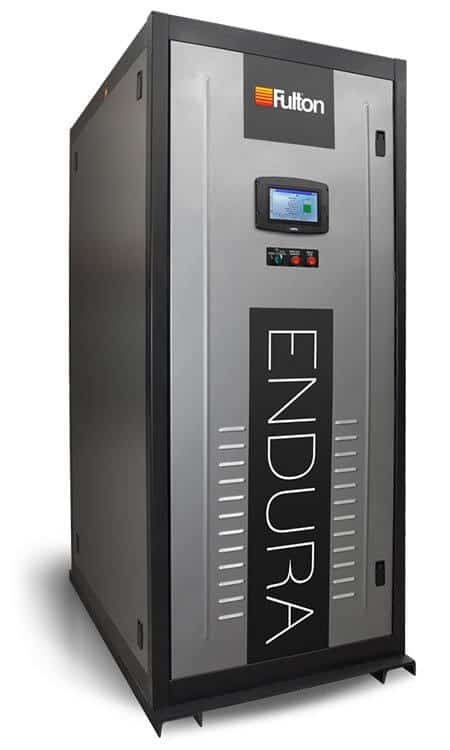When the Babcock & Wilcox Company sold the first steam-generating boiler in 1867, a “brick-faced boiler” that used tubes inside a firebrick-walled structure to generate steam, it brought to market a groundbreaking technology whose efficiency was consistently improved through the countless designs that followed. Fast-forward a hundred and fifty or so years and non-condensing boilers, which use combustion to heat water or create steam, had become the industry standard for providing a steady supply of hot water and heat to large buildings such as schools, hospitals, and factories. But while these boilers operated at an 80-85% efficiency that represented a vast improvement over those of the past, all non-condensing boilers shared one common feature that prevented this percentage from improving: a flue stack through which their exhaust gases were released or, in other words, wasted heat.
This approach evolved over time to develop the condensing boiler design we know and love today. This boiler operates well above 90% efficiency thanks to a design that condenses, recovers, and uses – rather than loses – exhaust gases. When you consider the reduction in long term operating costs as well as CO2 emissions that this increased efficiency translates to, facilities’ increasing adoption of these boilers is no surprise. Indeed, the technology has become the norm in much of Europe, where many countries legislated that all new gas central-heating boilers be high-efficiency condensing boilers as early as 2005. The U.S. has begun incentivizing their installation through federal tax rebates and, in some states, rebates from power companies.
Our partner, Fulton, has seen a wide range of facilities, from local schools and higher education, to casinos and hospitals, recently chose one of the three condensing hydronic boilers that it carries. Energy efficiency, environmental friendliness, cost-effectiveness – and, perhaps most importantly given these locations, consistent performance – are just a few of the main reasons they’ve gone in this direction. Learn more here.




